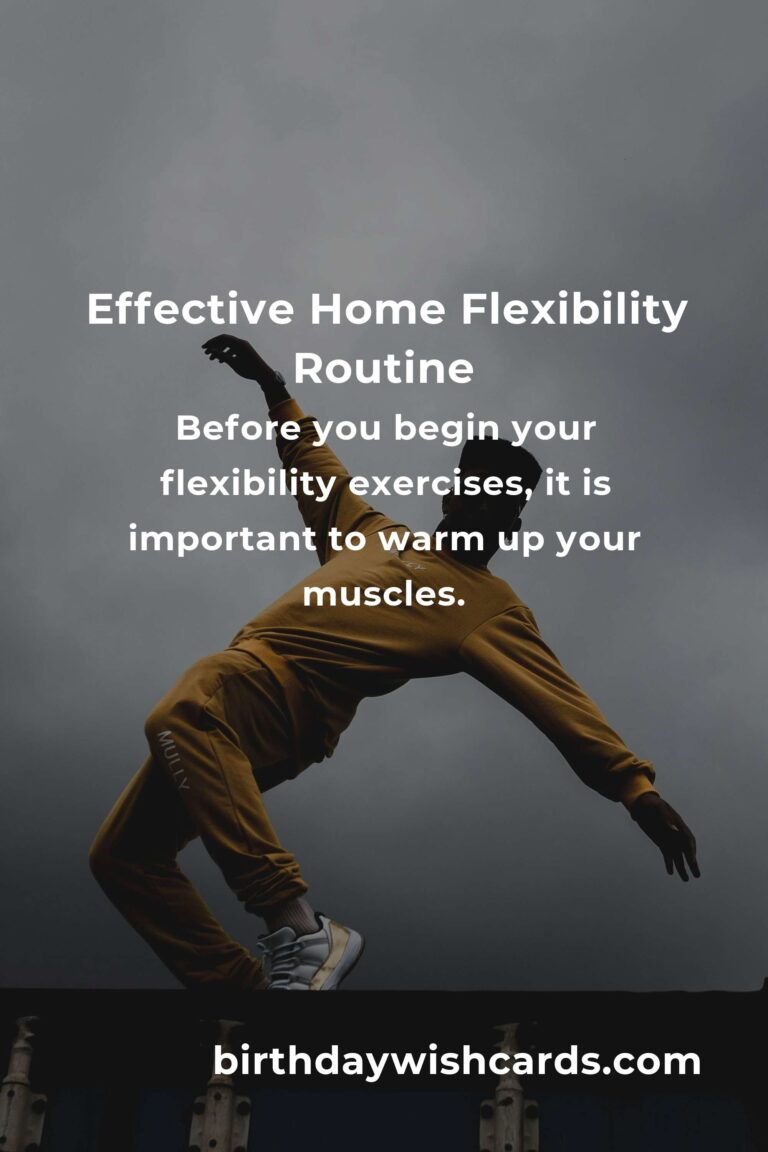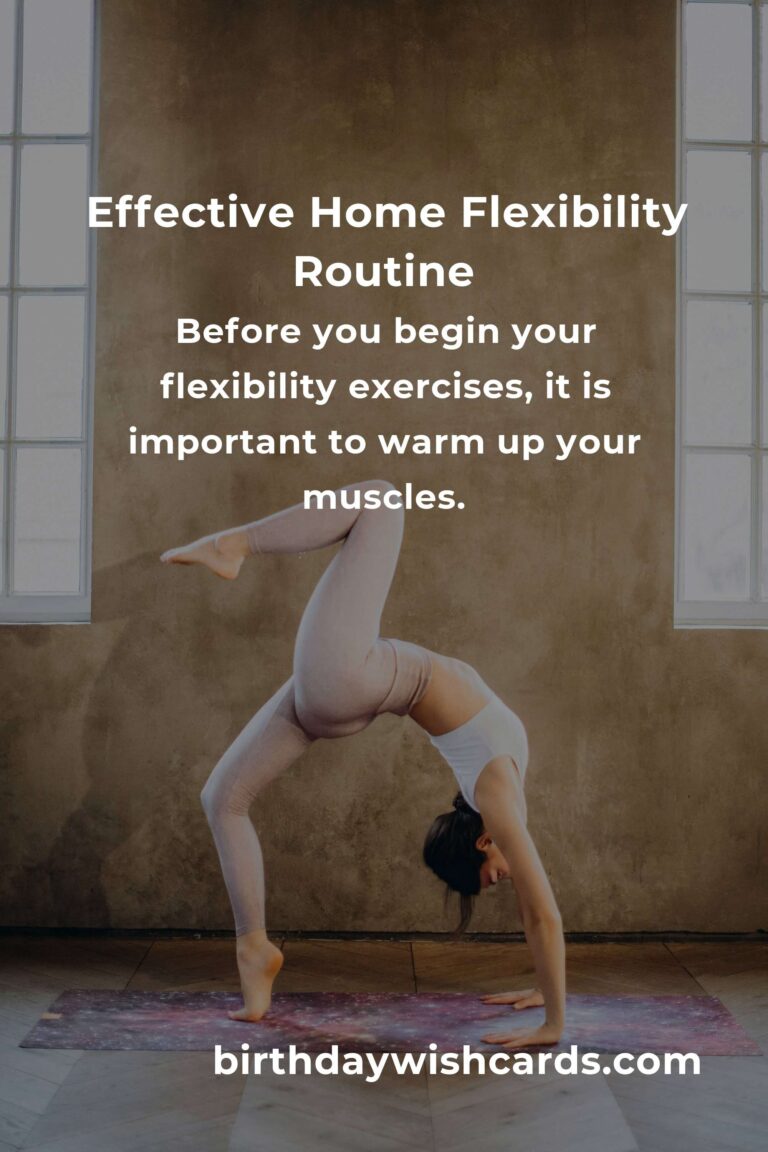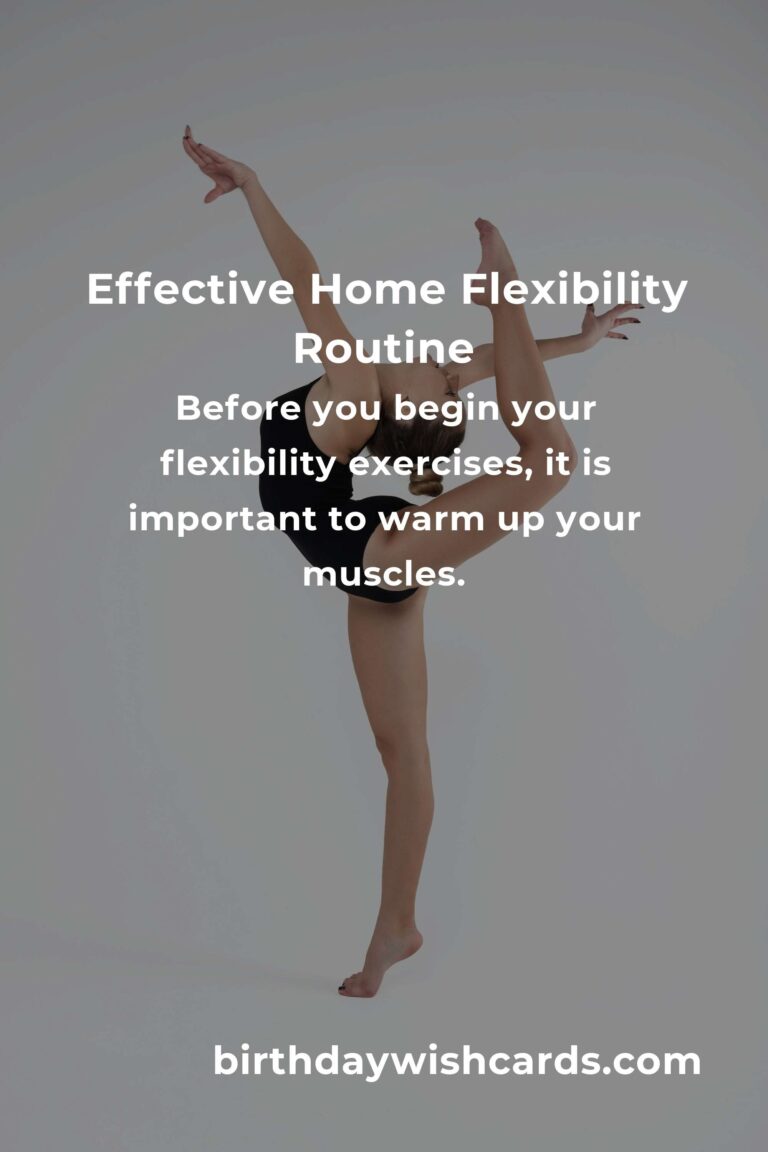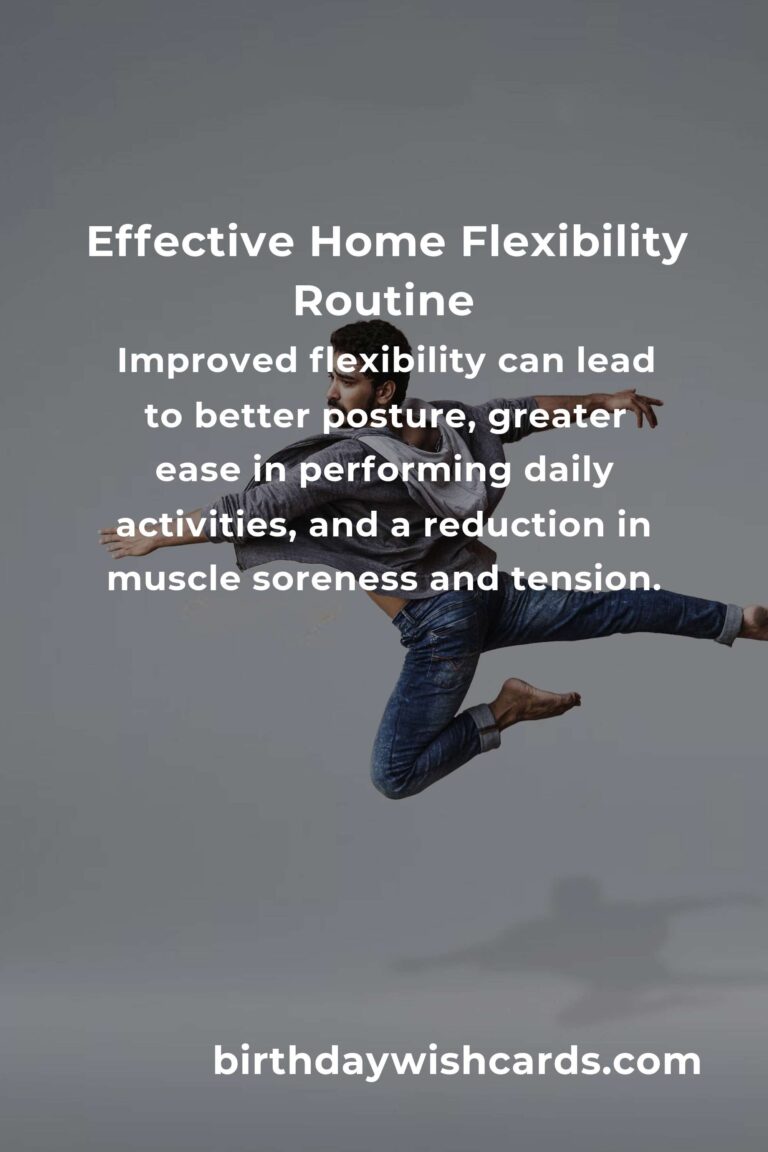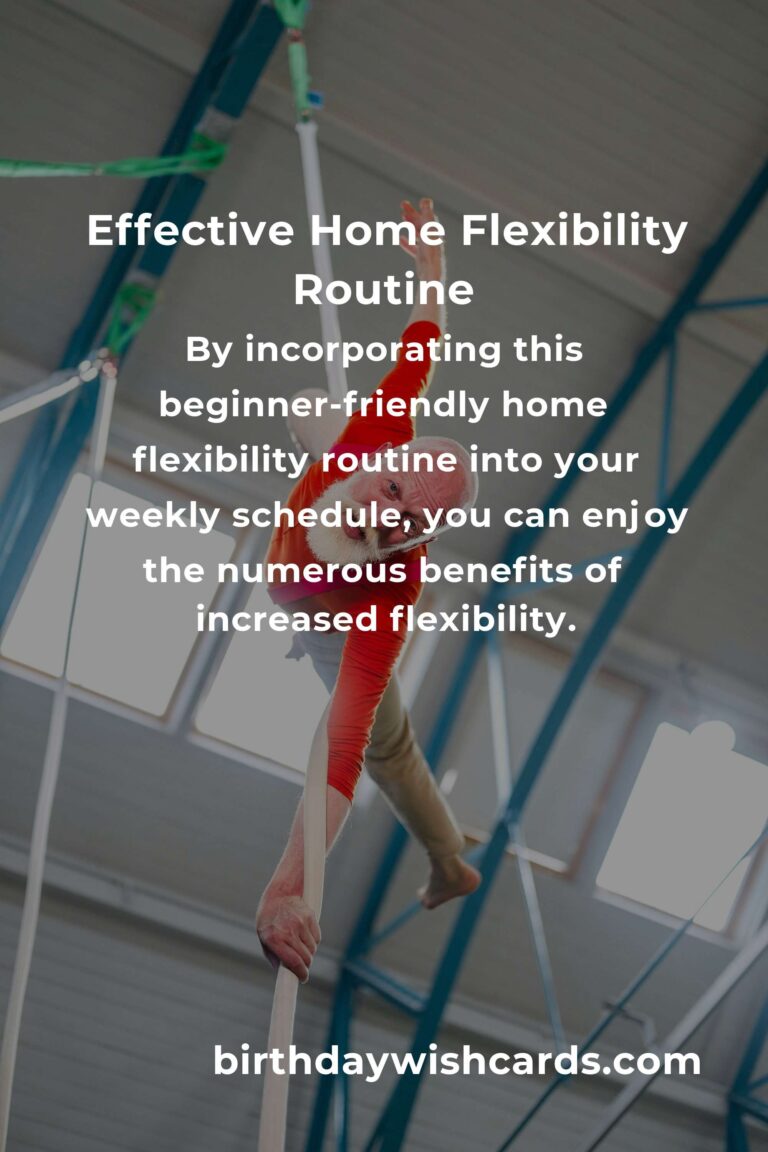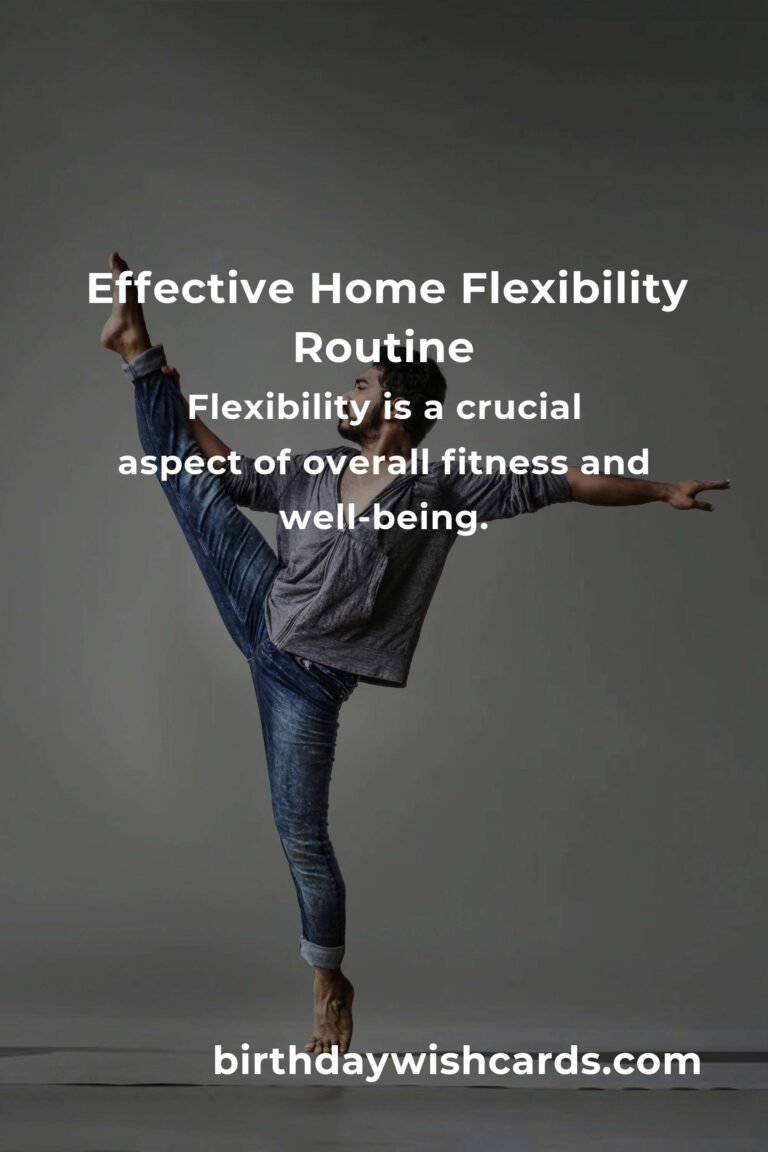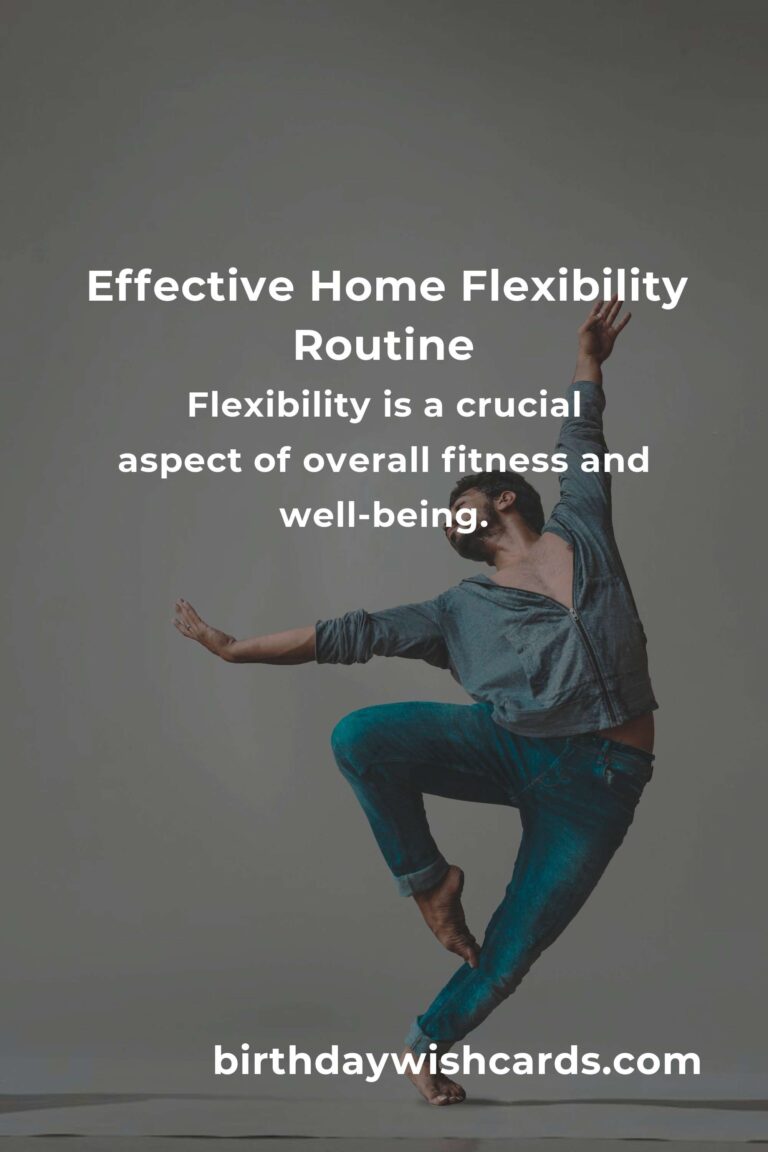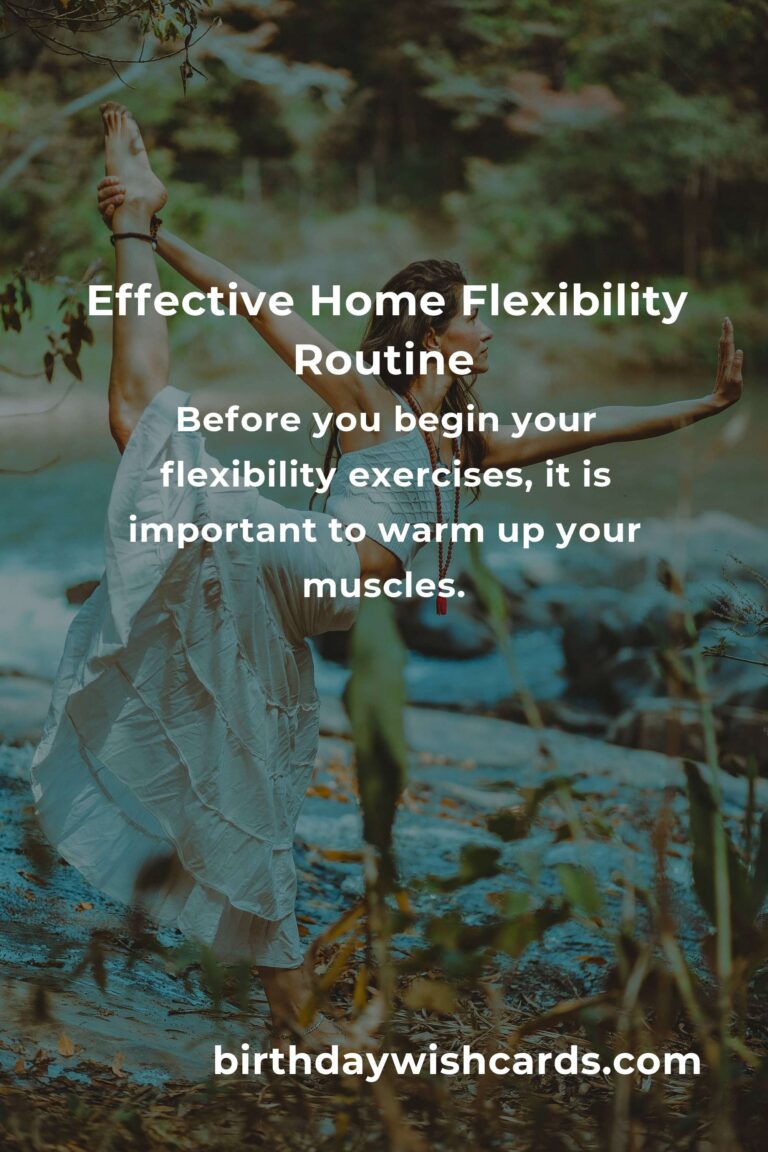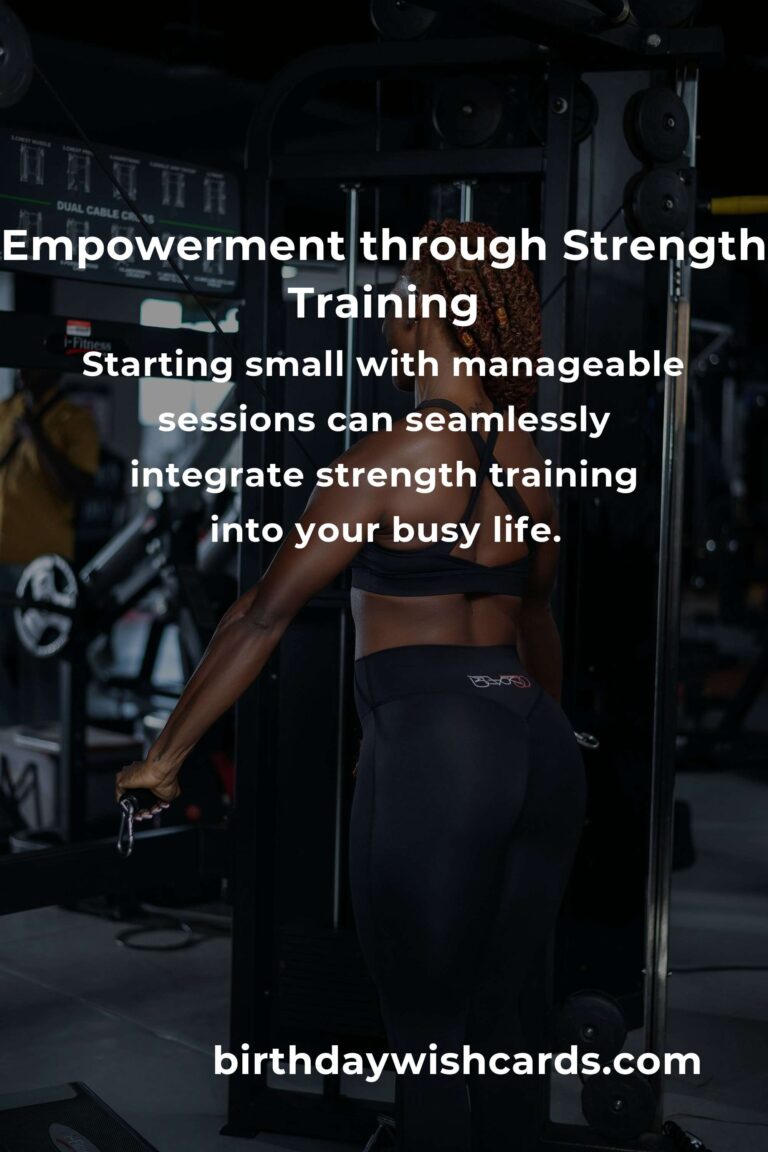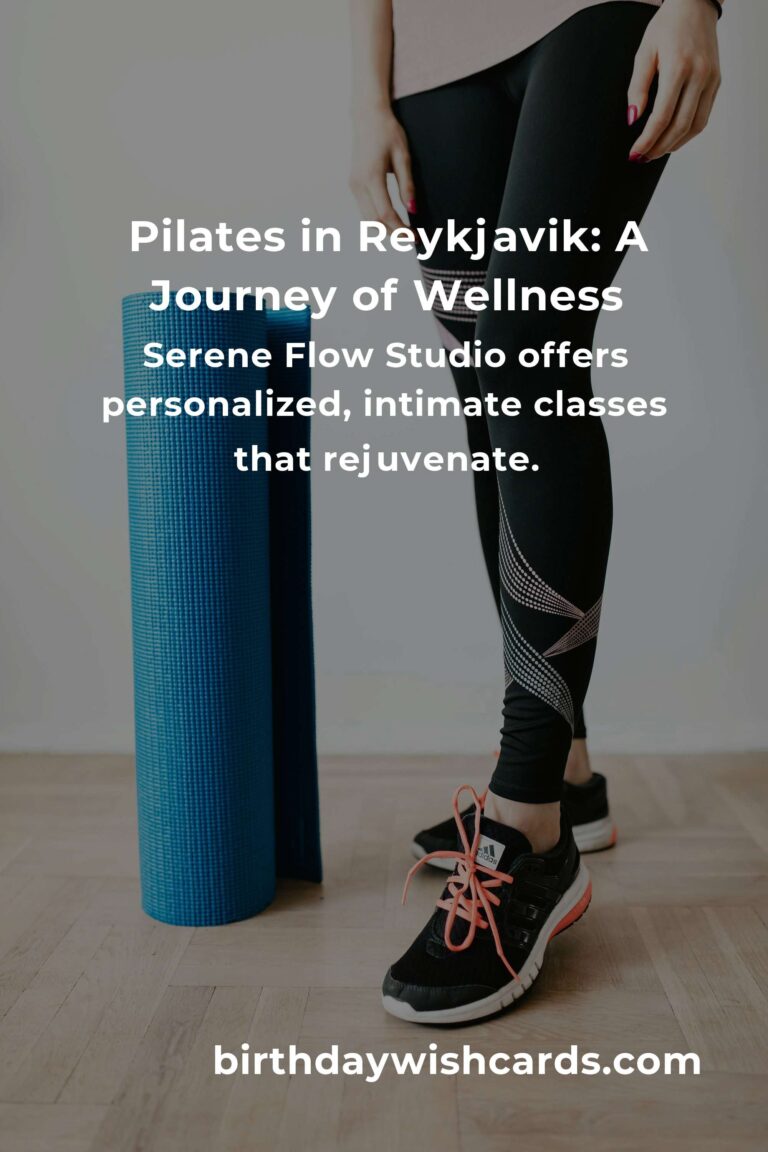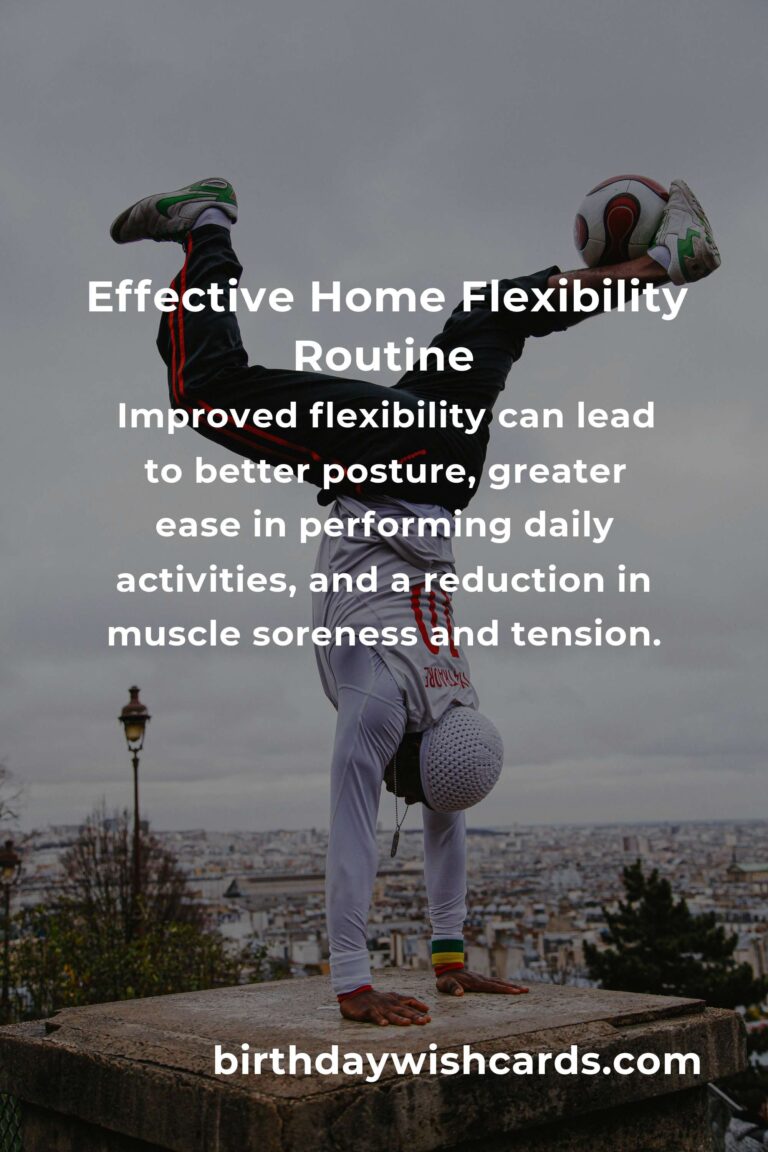
Flexibility is a crucial aspect of overall fitness and well-being. For beginners, establishing a home flexibility routine can be an accessible and effective way to improve range of motion, reduce the risk of injury, and enhance daily performance. This article will guide you through a routine that you can easily incorporate into your daily life.
Understanding the Importance of Flexibility
Flexibility is the ability of your muscles and joints to move through their full range of motion. It is an essential component of physical fitness, alongside strength, endurance, and balance. Improved flexibility can lead to better posture, greater ease in performing daily activities, and a reduction in muscle soreness and tension.
As we age, our muscles naturally lose elasticity, making flexibility exercises even more important. Engaging in a regular flexibility routine can counteract this effect, keeping you agile and mobile as you grow older.
Preparing for Your Flexibility Routine
Before you begin your flexibility exercises, it is important to warm up your muscles. A proper warm-up increases blood flow to the muscles, reduces the risk of injury, and prepares your body for the stretching exercises ahead. Consider starting with 5-10 minutes of light cardio, such as walking, jogging in place, or jumping jacks.
Flexibility Exercises for Beginners
1. Neck Stretch
Begin by standing or sitting up straight. Gently tilt your head towards one shoulder, holding the stretch for 15-30 seconds before switching sides. This exercise helps relieve tension in the neck and shoulders.
2. Shoulder Stretch
Extend one arm across your body and use the opposite hand to press the arm toward your chest. Hold for 15-30 seconds and repeat on the other side. This stretch improves shoulder flexibility and reduces tightness.
3. Chest Opener
Stand with your feet shoulder-width apart. Clasp your hands behind your back and gently lift your arms while keeping your back straight. Hold for 15-30 seconds. This exercise opens up the chest and shoulders, counteracting the effects of hunching over devices.
4. Cat-Cow Stretch
Get down on all fours with your hands directly under your shoulders and knees under your hips. Alternate between arching your back (cat pose) and dipping it (cow pose) to stretch the spine and relieve back tension.
5. Seated Hamstring Stretch
Sit on the floor with one leg extended and the other bent, foot touching the inner thigh. Reach towards your toes and hold for 15-30 seconds before switching legs. This exercise targets the hamstring muscles.
6. Butterfly Stretch
Sit with your feet together and knees bent, letting your knees fall towards the floor. Gently press down on your knees with your elbows to deepen the stretch. Hold for 15-30 seconds. This stretch improves flexibility in the inner thighs and hips.
7. Standing Quadriceps Stretch
Stand on one leg and pull your opposite foot towards your buttocks, holding your ankle with your hand. Keep your knees together and hold the stretch for 15-30 seconds before switching legs. This exercise stretches the quadriceps and improves balance.
Tips for Success
For best results, practice your flexibility routine at least three times a week. Consistency is key to improving flexibility. Remember to breathe deeply during each stretch and avoid bouncing, which can lead to injury. Listen to your body, and never push yourself to the point of pain.
As your flexibility improves, you can gradually increase the duration of each stretch and incorporate more advanced exercises into your routine.
Conclusion
By incorporating this beginner-friendly home flexibility routine into your weekly schedule, you can enjoy the numerous benefits of increased flexibility. Improved mobility, reduced muscle tension, and enhanced physical performance are just a few rewards of regular stretching exercises. Start today and take a step towards a healthier, more flexible you.
Flexibility is a crucial aspect of overall fitness and well-being.
Improved flexibility can lead to better posture, greater ease in performing daily activities, and a reduction in muscle soreness and tension.
Before you begin your flexibility exercises, it is important to warm up your muscles.
By incorporating this beginner-friendly home flexibility routine into your weekly schedule, you can enjoy the numerous benefits of increased flexibility.
#Flexibility #HomeWorkout #Stretching #BeginnerFitness #HealthyLiving


